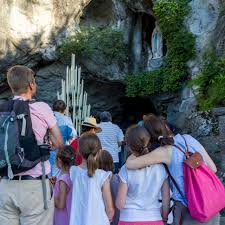Visiting & Pilgrimage: Phra That Chae Haeng | Sacred Buddhist Temple Thailand
Introduction
Nestled on a serene hillside in Nan Province, northern Thailand, Phra That Chae Haeng is one of the most revered Buddhist temples in the region. This sacred site, dating back to the 14th century, stands as a symbol of spiritual devotion, architectural grandeur, and cultural identity for the Thai people. For centuries, pilgrims and visitors have journeyed here not only to pay respect to the relics of the Buddha but also to experience the peaceful atmosphere that radiates throughout the temple grounds.
Historical Significance
The temple was built around 1355 AD during the reign of Phaya Kan Muang, the ruler of Nan at that time. According to tradition, Phra That Chae Haeng enshrines a relic of the Lord Buddha’s hair, making it a highly significant pilgrimage site. The temple became a spiritual center for the Tai Lue and other communities in Nan Province, cementing its role as a cornerstone of Buddhism in northern Thailand. For many locals, visiting the temple at least once in their lifetime is considered a blessing that brings prosperity and good fortune.
Architectural Splendor
The most striking feature of Phra That Chae Haeng is its towering golden chedi (stupa), rising gracefully against the blue skies. Standing about 55 meters tall, the chedi is gilded with gold and gleams brilliantly in the sunlight. Its design reflects the elegant Lanna style, with delicate details and a tiered structure that symbolize the heavens. Surrounding the chedi are intricately decorated viharns (ordination halls) and sculptures that showcase the artistry of northern Thai craftsmanship.
One of the highlights is the Naga staircase, with serpentine guardians leading pilgrims from the entrance up to the sacred stupa. Each curve of the naga is symbolic of protection, guiding devotees toward spiritual enlightenment.
Pilgrimage Experience
For pilgrims, Phra That Chae Haeng is not just a site of worship, but a spiritual journey. Many visitors climb the stairways barefoot as a gesture of humility and respect. They circle the chedi three times while chanting prayers, offering flowers, incense, and candles. The rituals are believed to bring merit, inner peace, and blessings for health and prosperity.
The temple is especially vibrant during Makha Bucha Day and Visakha Bucha Day, when thousands of devotees gather with lanterns and offerings. These events create a powerful sense of community and faith, where visitors can witness the deep spiritual connection of Thai culture to Buddhism.
Cultural and Local Identity
Beyond its religious importance, Phra That Chae Haeng is a symbol of Nan Province’s identity. The temple appears on official emblems, documents, and even local folklore. For the people of Nan, it serves as a spiritual anchor that connects generations. Many families include temple visits in their traditions, passing down stories about the significance of the relics and the temple’s blessings.
Visiting Today
Today, Phra That Chae Haeng welcomes both pilgrims and tourists. The temple grounds are peaceful, with panoramic views of Nan’s lush valleys and distant mountains. Visitors can take their time exploring the various halls, shrines, and statues, or simply sit quietly to absorb the meditative atmosphere.
The temple is easily accessible from Nan City, about 3 kilometers away, making it a popular stop for cultural travelers. Modest dress is required as a sign of respect, and visitors are encouraged to observe local customs during their time at the temple.
Conclusion
Visiting Phra That Chae Haeng is far more than a sightseeing trip—it is a spiritual pilgrimage into the heart of Thai Buddhism. With its historical roots, magnificent architecture, and sacred relics, the temple continues to inspire devotion and reverence. Whether you come seeking blessings, cultural insight, or a moment of peace, Phra That Chae Haeng offers an unforgettable journey into Thailand’s sacred heritage.
